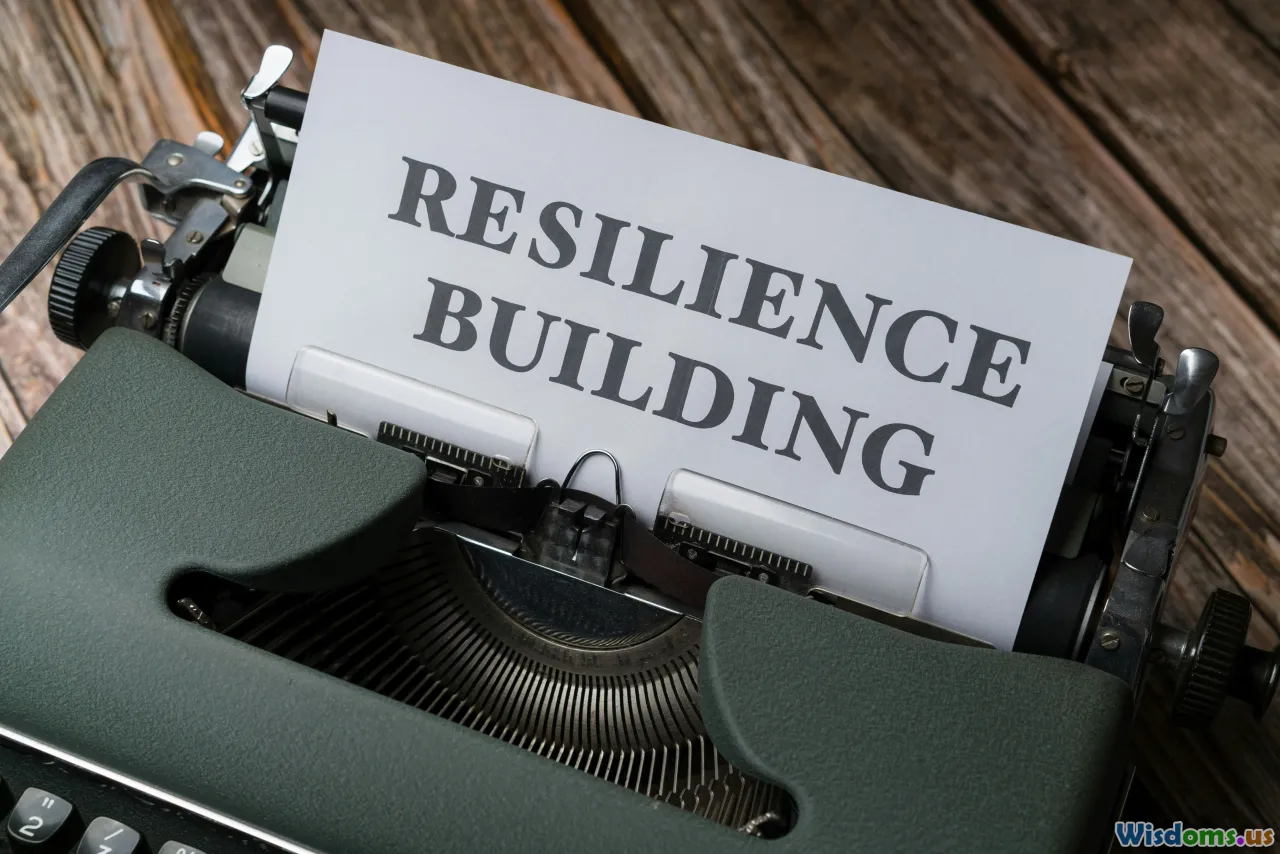
From Side Hustle to Scale Lessons Learned the Hard Way
14 min read Key lessons from transforming a side hustle into a scalable business, highlighting real challenges and success strategies. (0 Reviews)
From Side Hustle to Scale: Lessons Learned the Hard Way
Everyone loves a good success story fueled by entrepreneurial spirit, but the less glamorous chapters of late nights, failed experiments, and hard-earned wisdom rarely make it into the highlight reel. Whether you're just brainstorming for your first side hustle, knee-deep in orders from your kitchen table, or ready to take your passion project to new heights, scaling is a journey paved with challenges—and invaluable lessons. Here’s a candid roadmap, unpacking what truly matters in making the leap from small-time hustle to a growing venture.
Crafting the Right Foundation

Before imagining viral growth or dreaming of acquisitions, consider the bedrock beneath your business. Far too often, side hustlers tempt fate with shaky foundations—uninformed about legalities, customer demand, or even their own motivations.
Define Your "Why"
At 2:00 AM, when orders pile up and technology glitches, a clear sense of purpose will keep you moving. Ask yourself: Is your hustle for extra income, a creative outlet, or meant to disrupt an industry? Telling the difference changes how you approach everything—from product design to branding. Take Emily Weiss, for example, whose blog-turned-beauty-empire Glossier was built on a distinct vision that resonated deeply with her audience and guided every decision she made.
Nail Your Legal and Financial Basics
Failing to separate personal and business finances can spell trouble come tax season. Secure the proper licenses, consider forming an LLC for liability protection, open a business bank account, and track every dollar coming and going. Gig economy wisdom: shortcuts here lead to long-term headaches. According to the U.S. Small Business Administration, 20% of small businesses fail in the first year, often from legal or financial oversight rather than ideas gone wrong.
Embrace Testing Over Perfection

Rapid, low-cost experimentation fuels sustainable scaling. Many side hustlers refuse to launch until every detail is polished—only to discover what customers want is something entirely different.
Launch With an MVP
Develop a Minimum Viable Product (MVP)—a stripped-back version of your idea that solves a core problem. Not every launch needs fanfare: Ben Silbermann’s initial Pinterest product only had a handful of users, but constant iteration, based on real feedback, led to massive adoption. Fixating on perfection means wasted months and missed opportunities for invaluable feedback.
Listen to Early Users (Even When It Hurts)
Your first customers are gold mines for insights. Jane, a bakery side hustler in Toronto, recalled that while she loved making elaborate cakes, her clientele preferred simple, classic cupcakes. Iterating based on feedback not only improved her product but also focused her marketing, ballooning sales by 150% within a year.
Systematize to Survive

Manual hustle works when orders are few, but chaos erupts when demand surges. Growth magnifies flaws in your systems—quickly separating those who scale from those who stall.
Standard Operating Procedures (SOPs)
Draft simple checklists and instructions for everything: packing orders, responding to inquiries, handling returns. Repeatable systems enable delegation and consistency. As noted in The E-Myth Revisited by Michael E. Gerber, the fastest-growing franchises aren’t the most inventive, but those with the most reliable systems.
Automate, Then Delegate
Software can automate everything from scheduling (think Calendly for appointments) to inventory management (like Shopify or QuickBooks). Only hire or outsource when bottlenecks cannot be solved with good tooling. One drop-shipping entrepreneur credited Zapier automations for freeing up twelve hours a week—enabling a pivot from operational drudgery to strategic growth.
Understand—And Revisit—Your Market Fit

Great side hustles lose momentum when scaling efforts outpace understanding of their audience. The needs of ten customers rarely match those of a thousand.
Deep Dive Into Analytics
Gather data religiously: where do leads find you, what do they buy, how long before they return? During early COVID-19 days, a nimble mask-maker tracked purchase locations via Google Analytics, noticing ballooning interest in small Midwestern towns. Focused Facebook ads in those zip codes tripled her business in four weeks.
Adapt to Audience Evolution
Starbucks famously shifted its offerings as it expanded across America, introducing local flavors and menus based on new customer bases. Your side hustle may start with a certain crowd but serve a different market by the time you’re ready to scale. Never assume today's ideal customer will be tomorrow's.
Financial Discipline: The Oxygen of Scaling

Expansion eats cash—fast. Flirting with growth minus financial vigilance leads to strain that can crush even the best ideas.
Know Your Unit Economics
Understanding your profit per sale, average order value, and customer acquisition cost (CAC) is non-negotiable. Consider Monica, whose viral Etsy shop ran out of cash despite roaring sales—shipping costs and discounts devoured profits she never tracked. A hard lesson: revenue means little without profit.
Bootstrap Wisely, Fund When Needed
Retain your ownership and flexibility for as long as you can. Creative entrepreneurs often reinvest every earned dollar—like YouTube’s founders did in its early days. However, if orders are overwhelming and growth can't happen with your current capital, consider small business loans or partners only if the numbers make sense. Crowdfunding platforms like Kickstarter make it possible to test demand before risking huge investments.
People: Turning Solo Hustles Into Teams

Building a business as a solo act breeds clarity and speed. But when scaling, hustle requires help—usually long before you realize it.
Hiring Is Not Always the Answer
First, clarify bottlenecks. Are you doing tasks below your skill level? Tools and outsourcing can solve most issues better than adding payroll. For instance, scheduling social media or bookkeeping are perfect candidates for freelancers or intelligent automation.
Build Culture, Even With Contractors
When you must expand your team, start with values. Imagine Buffer’s fully remote team: sharing company values, using transparent processes, and building a strong culture—long before hiring in-house. Culture is not only a startup buzzword; it helps maintain consistency when you can’t be everywhere and do everything yourself.
Fail Fast, Learn Faster: Iteration Is King

Mistakes in the side hustle lane can sting, but at scale, their impacts multiply. Embrace failure as a cost of doing business—and use it to drive reinvention.
Post-Mortem Every Flop
After every stumble—a blown marketing campaign, a batch of returned goods—conduct a blameless analysis. Ask, "What did we overlook? How can this be a learning experience for the next launch?" Dropbox pivoted from heavy early marketing spend to investing in viral referral programs, drastically reducing customer acquisition costs—after learning how their first growth strategy flopped.
Yearly (or Quarterly) "Burn the Playbook" Days
Block time for reviewing what’s working and what isn’t. Celebrate wins but ruthlessly prune offerings, systems, or ads that no longer serve you. Shopify founder Tobi Lütke famously said, “The best product is not the one with the most features, but the least.” Simplicity and speed are survival traits across every stage.
Saying No: How Focus Builds Empires

Saying yes feels fun; it's the birthright of ambitious creators. But expansion requires the discipline to pursue only opportunities that align with your goals and resources.
The Power of a Not-Now List
Legendary investor Warren Buffett advocates what he calls the “Not To Do” list—listing tempting distractions and earmarking them for later. If you’re torn between expanding your Etsy product line and upgrading your website, pick one priority per season and table the rest. Laser focus is the antidote to drowning in opportunity overload.
Beware the Shiny Object Trap
Avoid latching onto every new tool or trend without a solid strategy. If TikTok ads, pop-up events, or international shipping don’t fit your core business or capabilities, practice restraint until your bedrock operations can absorb the new initiative without destabilizing everything else.
Real-World Scalability: Lessons From the Trenches

Scaling a side hustle is more marathon than sprint. Success rarely follows a straight line—expect to iterate, backtrack, and reinvent several times over.
Small Examples, Big Results
- The Microbrewery Owners: What began as hobby brewing for friends, grew slowly out of their garage, with strict quality controls and smart reinvestment. Despite being approached for rapid franchising, the founders declined until their processes and training were robust enough for hands-off replication—saving their brand during a regional expansion.
- SaaS Indie Developers: These one-person software shops, like Peter Levels (Nomad List), run lean, automate ruthlessly, and avoid outside funding—prioritizing profitable, user-driven features over splashy growth, thus sidestepping the trap of feature bloat and enabling steady, manageable expansion.
Lifelong Learning
The market, technology, and even your goals will change. Stay endlessly curious. Carve out time for podcasts, courses, or networking (virtual or real) with those one or two steps ahead. “If you’re the smartest in the room,” as the saying goes, “you’re in the wrong room.” Consider joining mastermind groups or local business associations for real-time wisdom and inspiration you simply can’t get from YouTube tutorials alone.
Ambition, resilience, and a willingness to learn quickly trump daydreams of overnight success. Growth is compelling, but scaling successfully means wrestling with—and learning from—the inevitable challenges along the way.
It’s a messy path, and few get it right the first time. The trick isn’t avoiding mistakes—it’s maximizing what you learn every step of the journey. Scale patiently, and your side hustle can become more than just a source of income—it can be your legacy.
Rate the Post
User Reviews
Popular Posts
















